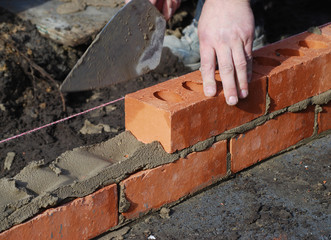When it comes to brickwork, there are several important factors to consider. It’s essential to choose the proper size, shape, and consistency of the brick. It’s also important to ensure that it doesn’t show signs of efflorescence. Sand used in the brick mortar should be coarse and not contain fine grains or silt. Water should be used properly for the bricks to remain strong and flexible but not to become watery or dry. Stacking the bricks properly in the vicinity of the construction site is essential. Hiring Masonry Contractor Brooklyn ensures quality brickwork that can save you time and money.

The most common brickwork pattern is a solid brick wall comprised of two or more wythes of bricks. The header bricks are vertical units and are called stretchers. The bond type depends on the pattern of the stone. In the common bond, the sixth course is made up of headers and the rest is stretcher bricks. The Flemish and English bonds alternate between stretching and laying stretcher and header types. The latter tends to be stronger and less susceptible to major cracks.
The second most common brickwork pattern is called a rowlock course. A 90-degree turn achieves this on the header course. This pattern features narrow side faces and is typically used for decorative areas and the sill of a window. Shiner course is a more expensive option, but it is still common. Moreover, the same pattern is usually used for the last two courses. You should be sure to use good-quality bricks and check the verticality of the wall with a plumb bob.
A common mistake in brickwork is to make the joints too thick. During the building process, the joints will become hollow. The result is a less-than-perfect surface. If you are unsure of the thickness of the joint between the bricks, you should consult a brick expert. A professional should not use over-thick joints as they may reduce the strength of the bricks. They should have a smooth surface and a flat surface.
Brickwork is another important factor to consider. It should be perfectly vertical and plumb. Using the right bricks and cement can make the walls look better. You should make sure that you use good quality bricks and that the bricks are properly spaced. A good masonry job will not look uneven. When done correctly, it will look beautiful. You will want to check it out for flaws and use a level if necessary.
The brickwork above the plinth is called the superstructure. It transfers loads from the walls to the top. It accommodates doors, windows, ventilators, and other fixtures. It may also have ornamental features. It is important to use quality bricks to ensure that your brickwork will last a long time. You will want to ensure that the bricks are of high quality to avoid settling over time. If you’re unsure, check with a professional for any cracks or other problems that you might find.
If you’re a novice in brick masonry, it’s important to understand the fundamentals. First, bricks aren’t made with water. They aren’t soaked in water to prevent them from separating. And they shouldn’t be stacked too close together, either. This can result in a weak wall, which will cause problems in the future. And if you don’t want to risk a collapse, you should consider using a wall or column with the correct shape and size.
Depending on the area where you’re building, bricks are arranged in a specific sequence. The masonry sequence is known as a bond. The bricks should be stacked in a straight line. You should start the masonry at a corner and work your way upwards. This will help ensure that the wall is level and has a smooth finish. You should avoid working on the center of the wall as this is where the foundation will end.
Lastly, bricks should be soaked in water before they are laid. It’s essential to use good-quality bricks to avoid the possibility of cracks or other problems. While clay-based brick is waterproof, it’s not waterproof in most places. So, if the project requires masonry, you should use tar paper or concrete to prevent leaks. You should also ensure that the walls are plumb and level. And they should have a horizontal and vertical joint, which is not continuous.